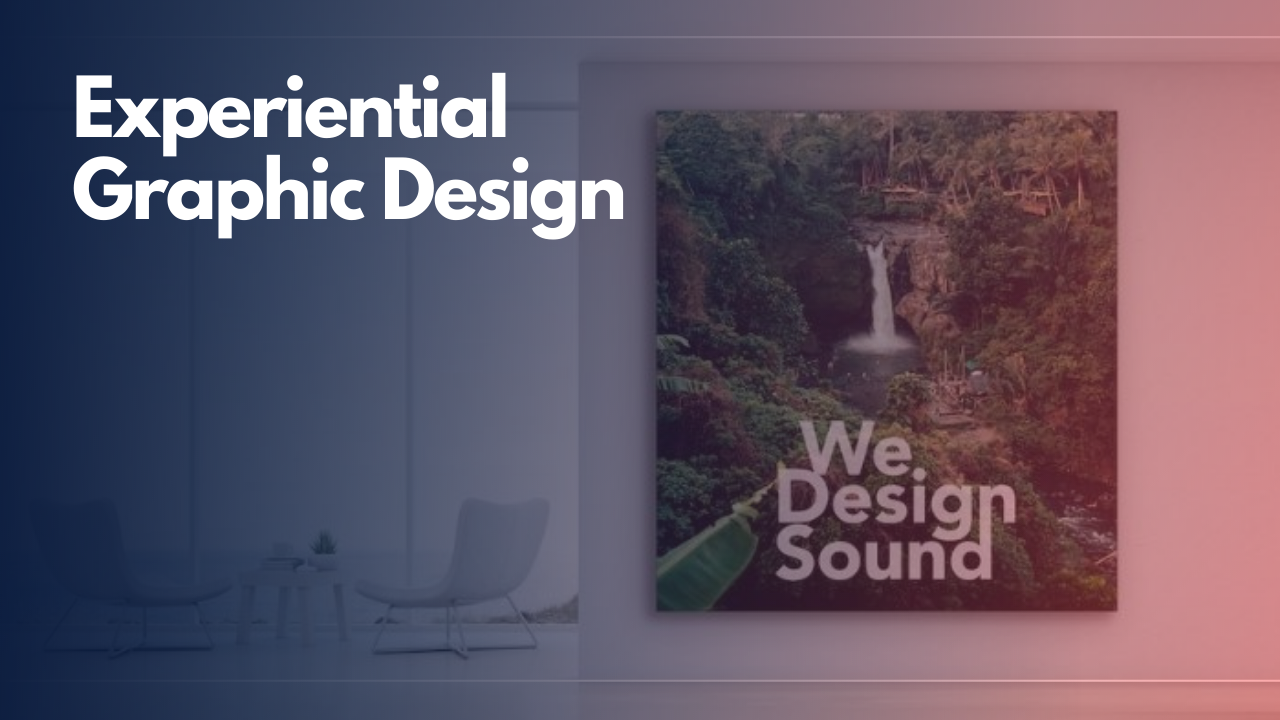- Experiential Graphic Design (EGD) aims to facilitate emotional connections between people and places by instilling meaning into the built environment.
- During the current situation, EGD can be used to “to take a crummy situation and lighten it up” through playful or positive design and graphics.
- In this interview with Allwork.Space, design experts John Stein and Ari Grazi discuss how EGD can be used in today’s workspaces.
When it comes to conceptualising the workspace, designers are looking beyond the aesthetic and functional to forge ‘experiences’ for users. Experiential Graphic Design (EGD) helps facilitate emotional connections between people and places by instilling meaning into the built environment through typography, colour, imagery, form, technology and content.
To learn more about how EGD is being used in today’s spaces, we caught up with Kirei’s President, John Stein, and Indiesigns’ President, Ari Grazi. Kirei is a provider of innovative eco-friendly design materials for commercial interiors and Indiesigns is an online, graphic design signage company creating independent-artist designed COVID-19 signage.
Allwork.Space: Firstly, what experiences/emotions do your current clients want their EGD installations to evoke? Have you noticed a shift since Covid-19?
Ari Grazi: Right now there are a lot of emotions swirling around our society, and some of them particularly negative—frustration, fear, boredom, anger. At Indiesigns–an online shop for graphically-upbeat, artist-designed Covid-19 signage—we see art and great design as counter-forces for these emotions when used in the appropriate form.
For example, take a post-pandemic experience that could be frustrating, like being forced to stand six feet apart from the next customer in line. Now, picture those instructions on a thoughtfully written sign, with artistically-designed floor decal to stand on.
The idea is to take a crummy situation and lighten it up. There definitely has been a shift since Covid-19—now more than ever, business owners (across all sectors—workplace, hospitality, retail and healthcare) need to make patrons feel welcomed and safe.
They need to ‘see’ that their wellbeing is being taken care of, whether they’re residing, working, shopping, learning, dining or traveling; seeing is believing.
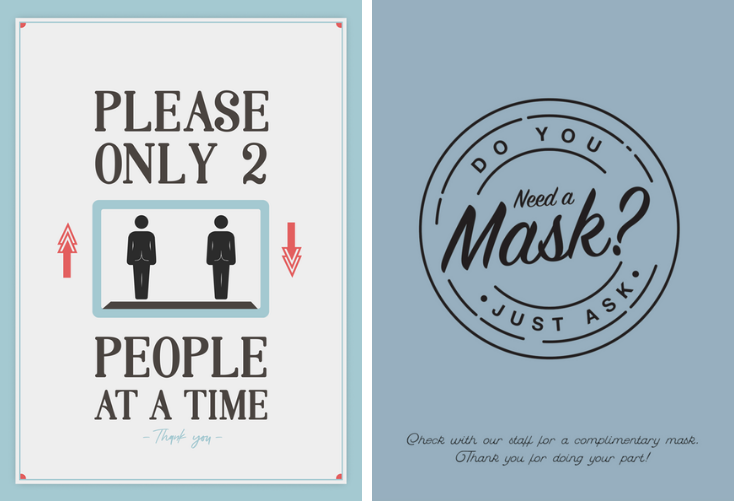

John Stein: It isn’t enough to merely create beautiful spaces. In 2020, architects and designers are increasingly seeking to create meaningful design experiences for their clients. Art and graphic design are an effective way to do this, because art and visual communication both play a fundamental role in shaping the emotional experience of the space.
‘…society will collectively seek more graphically-forward, uplifting design experiences, as we’ve become increasingly cognizant of the role that our environment plays in shaping happiness and wellbeing.’
EGD—the orchestration of typography, color, imagery, form, technology, and content for the purpose of visual communication or art—helps create spaces that communicate. From bold and artistic, to detailed and informative, EGD is used to elevate the presence of the space, and the inhabitant’s emotional connection to it.
In regards to pre and post Covid-19 EGD installations, we do believe that society will collectively seek more graphically-forward, uplifting design experiences, as we’ve become increasingly cognizant of the role that our environment plays in shaping happiness and wellbeing.
The built environment is at the very heart of our human existence; it’s the context in which our lives play out. Architecture is more than brick-and-mortar, science, math, and engineering, because the way in which inhabitants interact with these buildings—consciously or subconsciously—has a direct effect on their wellbeing.
In 2020, this was impossible to ignore. Our relationship with the built environment dramatically shifted—undertaking remote work and quarantine, we realized the extent to which our environments helped, or hindered, us. We were forced to question the safety of the buildings in which we frequented—offices, shopping malls, restaurants, and hotels. Just as architecture shapes our behavior, so has Covid-19.
Allwork.Space: How do you ensure that an EGD piece will resonate with the intended audience? For example, do you get input from a cross section of people who utilise the space?
John Stein: It takes working closely with the key stakeholders to determine the intended impact of EGD on the audience. In conceptualizing the application of the EGD within the space, you have to ask, “Is this EGD aimed at customers, patients, employees, students, or visitors?” in order to determine the audience, and then the desired effect you want to have on this group. The desired effect could be providing comfort, calmness, or inspiring creativity and learning.
Allwork.Space: What’s an EGD project you’ve really enjoyed working on and why?
John Stein: Integrating EGD can be new for some designers and architects. We generally follow four steps. The first is to identify potential in the plan—like with anything, good design begins with the end goal in mind. From the outset, we advise our clients to begin to identify spaces where EGD might play a role in elevating the design experience, such as lobbies, lounges, conference rooms, and stairwells.
Step two is to research the client’s business—plan time to research the client, and find unique elements, stories, facts, and figures to celebrate in the EGD. Once this research has been collected, step three is synthesizing it into compelling graphics to be used throughout a project. Types of elements to work with include infographics, typography, logo abstractions, and historical timelines.
The last step is to use a high-quality product; this year, Kirei became the exclusive North America distributor of AKUART—a collection of infinitely customizable framed acoustic design elements with an easily changeable canvas, suitable for workplace, education, hospitality, worship, retail, and healthcare environments. AKUART provides acoustic balance while simultaneously providing an EGD experience; the AKUART acoustic canvas can be printed with high-resolution images, acting as art, wayfinding, or as an interior accent.
Made from green materials, AKUART’s four framed acoustic design elements—‘On The Wall’ acoustic wall panels; ‘Hang With Me’ suspended acoustic panels; ‘Stand By Me’ free-standing acoustic wall screens; and ‘Shelter Me’ acoustic desk screens—allow designers to select from a variety of art, including solid colors (with color matching available), pre-existing art, or custom images. Basically, wherever art can be used, AKUART can be used (but with the added value of acoustic absorption of unwanted noise).
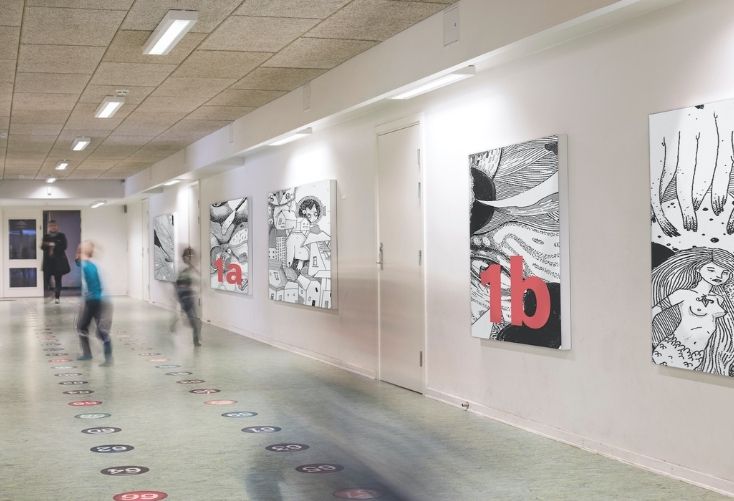
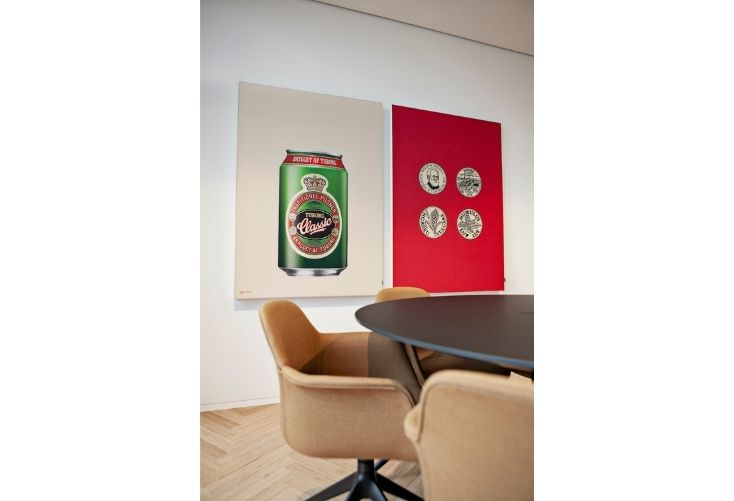
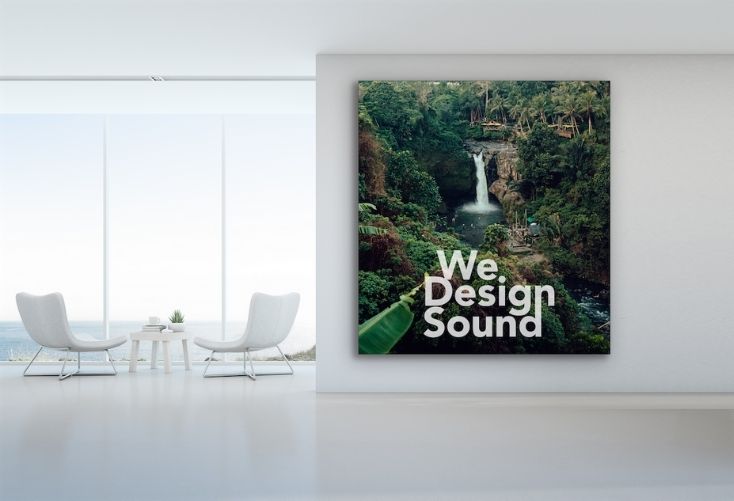
Allwork.Space: What impact does EGD have on employee wellbeing?
John Stein: EGD is fundamentally about human driven-design, and the importance of placing the inhabitants of the space at the core of the design strategy. There’s a lot of research on the effects that color has on the psyche and overall well being of inhabitants, with EGD playing a role in this—helping to create soothing, healthier, more productive spaces.
On the other hand, if the desired role of the EGD is for wayfinding, to keep people moving through a space (like during grocery shopping, for example), it can facilitate that behavior as well. A well thought-out space can communicate core values—if not directly, then by setting a mood or tone that promotes those values. It can also either promote teamwork by delineating spaces, or break up siloing by making sure spaces are connected graphically.
‘…signage should prioritize aesthetics when the message being communicated is one fraught with hardship, and perhaps even trauma.’
Ari Grazi: Visual communication sets the tone for what kind of experience both employees and patrons should expect. It provides an emotional context and individual personality for the space that informs how to act and what the patrons’ connection to their environment should be. The independent artist-created signs of Indiesigns are proof that signage need not sacrifice aesthetics—in fact, quite the opposite; signage should prioritize aesthetics when the message being communicated is one fraught with hardship, and perhaps even trauma.
Lastly, we think that experiential graphic design-centric Covid-19 signage that is well-designed is actually safer. We’ve seen stores that opted to use painters tape, or tiny dots, but people just walk right past them. A big visual—clearly marked—with vibrant colors, will catch the customers’ attention, leading to safer interactions between patrons and staff.
Allwork.Space: What role do you think EGD will play in the post-pandemic built environment?
Ari Grazi: Visual communication is always going to be important for brick-and-mortar stores (and their online counterparts). With the pandemic, businesses require a higher level of communication with their customer, which often needs to take part in a safe, socially distanced way. Signage is the answer to this. As signage becomes more important, we see businesses wanting to focus more on well-designed signage that has a more human approach to design.
‘As the post-pandemic design trends begin to take shape, EGD can help with inspiring feelings of social connection, even while maintaining a physical, six-foot distance.’
John Stein: As the post-pandemic design trends begin to take shape, EGD can help with inspiring feelings of social connection, even while maintaining a physical, six-foot distance. EGD as wayfinding and signage can help with directing traffic and keeping wanderers out of places they should not be. Additionally, it can help maintain visible space divisions, or connect disparate spaces through color and messaging.
Allwork.Space: Finally, can EGD be virtual as well as physical? A hybrid of the two?
John Stein: EGD can help connect branding across multiple media and maintain a seamless connection between the virtual environments (think zoom backgrounds) and physical spaces—if they look coherent, it helps maintain branding and brand experience across multiple experiences, both online and offline.


 Dr. Gleb Tsipursky – The Office Whisperer
Dr. Gleb Tsipursky – The Office Whisperer Nirit Cohen – WorkFutures
Nirit Cohen – WorkFutures Angela Howard – Culture Expert
Angela Howard – Culture Expert Drew Jones – Design & Innovation
Drew Jones – Design & Innovation Jonathan Price – CRE & Flex Expert
Jonathan Price – CRE & Flex Expert
